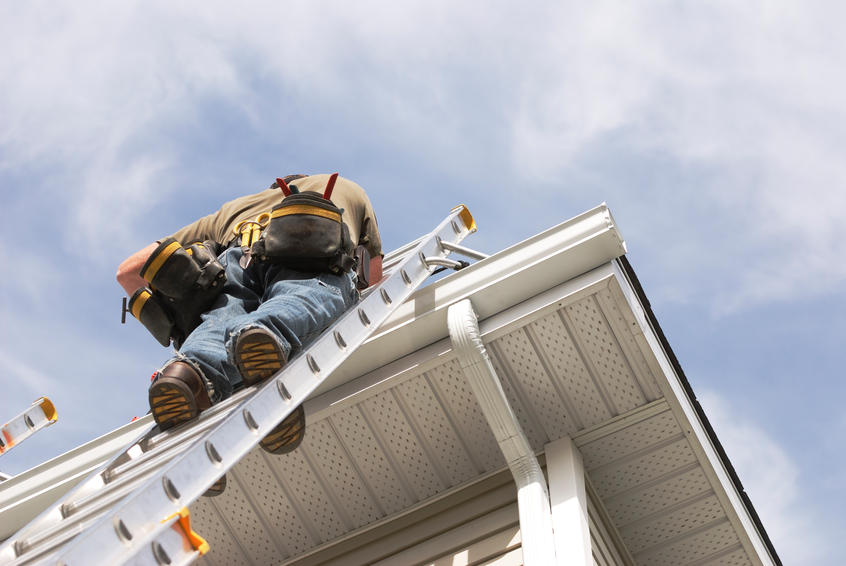A Guide to Solar Roof Tiles: The Next Big Thing
It's likely you've already seen the news on Elon Musk's new, and attractive, solar roof tiles. If you're considering installing some on your home, there are a few things you should know.
In this article, we'll take a quick look at some of the features of solar roof tiles — including their biggest benefits and drawbacks — and the top brands on the market today.
Solar Roof Tile Features
Built to resemble traditional roof tiles, solar roof tiles — or solar shingles — are thin, photovoltaic (PV) sheets that can replace or lay on top of existing shingles. Just like solar panels, solar roof shingles capture energy from sunlight and can be installed in any climate or environment.
Size:
Solar shingles are smaller than traditional solar panels but are comparable to traditional roofing shingles — about 12 inches wide by 86 inches long — and weigh about 13 pounds per square foot. The tiles are typically less than an inch thick, and a standard installation is approximately 350 tiles.
Material:
Many PV shingles are thin-film solar cells (TFSC) made from copper indium gallium selenide, a semiconductor that allows the cells to be thin and flexible. This material is said to have one of the highest conversion efficiency rates, an average of about 10–12%. Other brands use monocrystalline silicon (mono-Si), a natural semiconductor used in making computer chips. Mono-Si cells have an average 15–20% efficiency rate but are generally more expensive.
Power:
Depending on the brand and type of shingle you purchase, power generated by your solar shingles will vary. Most shingles produce between 13 and 63 watts. According to some estimates, 350 tiles can cut the average utility bill by 40 to 70%. All systems require an energy inverter kit in order to harness the power captured by the cells.
Pros and Cons of Solar Roof Tiles
While the idea of saving the planet — as well as some money on your power bill — might be reason enough to purchase solar shingles, there are some notable benefits and disadvantages to consider before you install. Here are a few things to keep in mind before you re-shingle your home with PV cells.
Pro — Sleek Appearance: One of the main benefits of a solar shingle system compared to solar panels is the potential aesthetic appeal. Solar panels can be bulky and noticeably stick out from rooftops, while tiles are designed to match the existing roofing. Although solar shingles may not match all roofing exactly, they do blend in, creating a sleek, level appearance.
Con — Metallic Appearance: Although the sleek look of solar shingles is appealing to some, the contrast of metallic cells against a traditional roof can be off-putting to others. Consider your aesthetic preferences before committing to installing solar shingles or solar panels on your home.
Pro — Money Savings: Scientific American reports that solar shingles could lower monthly electricity bills by about 50%. Plus, residents who install Energy Star–approved solar-power systems before the end of the year will be able to put 30 percent of installment costs toward tax payment due.
Con — Lower Efficiency: Solar shingles may be less efficient than solar panels, especially if you use thin-film solar cells. Keep in mind that solar panels can also be adjusted to the best angle for sunlight exposure, but shingles cannot. This means you may need more shingles to achieve the same energy output, increasing your total cost.
Pro — Easy Installation: Solar shingles are generally easier to install than solar panels. In fact, regular roofing installers can likely take care of much of the work. You may even be able to do it yourself, though you'll likely need the help of an electrician to set up the wiring and connect you to the grid.
Con — High Installation Cost: The biggest drawback to installing solar roof shingles is its high price tag. Despite technological innovations, a large installation can still cost anywhere from $10,000 to $20,000.
Best Brands
Most companies offering solar shingles today use one of two brands that have established themselves as leaders in the solar industry.
Dow:
Dow has been a leader in solar energy innovation since 1994. The company specializes in providing high-quality materials to suppliers throughout the globe and is known for its sustainability and environmentally conscious work. Powerhouse is the company's official solar shingle system, and it comes with a solar monitoring system to show how much energy your system is producing at any time.
CertainTeed:
CertainTeed is known for building sustainable structures. Along with conventional roofing, the company specializes in manufacturing Apollo II solar roof tiles. These shingles can withstand 250 pounds per square foot and winds up to 150 miles per hour.
A solar roof tile system may not be right for everyone, but the advantages are clear. Whether you're interested in saving the planet or just saving money, solar shingles can be a smart investment for anyone.
If you're ready to take the next step, calculate the cost of installing your own solar roof tiles and find out how much you can save by implementing renewable energy in your home.

